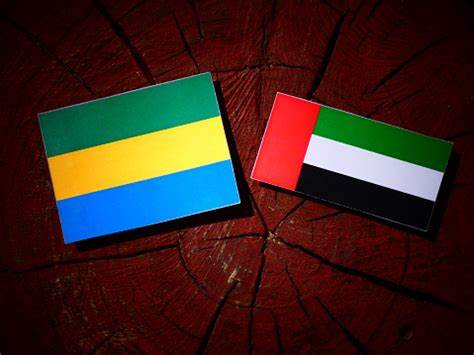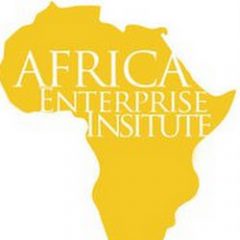Contrasting Economic Disparities: Gabon vs. United Arab Emirates (UAE)
Contrasting Economic Disparities: Gabon vs. United Arab Emirates
Introduction:
Economic disparities among nations are a common feature of the global landscape, reflecting differences in resources, historical development, and government policies. This essay aims to shed light on the contrasting economic disparities between Gabon, a Central African nation, and the United Arab Emirates (UAE), a Middle Eastern powerhouse. While both countries have distinct economic profiles, examining their differences can offer valuable insights into the challenges and opportunities that each nation faces.

Gabon’s Economic Profile:
Gabon, located on the west coast of Central Africa, is known for its lush rainforests, mineral resources, and oil reserves. However, despite these abundant natural assets, Gabon faces significant economic disparities. The country’s economy heavily relies on oil exports, which account for approximately 50% of its GDP. This overreliance on a single commodity makes Gabon susceptible to global oil price fluctuations.
One of the primary issues contributing to economic disparities in Gabon is income inequality. Despite the nation’s wealth, a significant portion of the population lives in poverty. The benefits of oil revenues have not been distributed equitably, leading to a high level of income inequality. Moreover, unemployment rates remain elevated, particularly among the youth, exacerbating social and economic disparities.
The lack of economic diversification is another key challenge for Gabon. The government has recognized the need to reduce the country’s dependence on oil by promoting sectors like agriculture and tourism. However, progress has been slow, and economic diversification remains an elusive goal.
United Arab Emirates’ Economic Profile:
In stark contrast to Gabon, the United Arab Emirates stands as one of the most prosperous nations in the world. Located on the Arabian Peninsula, the UAE has experienced rapid economic development over the past few decades, transforming it into a global economic hub. The primary drivers of the UAE’s success include its vast oil reserves, strategic geographic location, and a visionary approach to economic diversification.
The UAE’s economic diversification efforts have been particularly successful. The government has invested heavily in infrastructure, tourism, and finance, among other sectors. Dubai, one of the UAE’s emirates, has become a global business and tourism destination, attracting millions of visitors and businesses annually.
Furthermore, the UAE’s commitment to innovation and technology has paid off. The establishment of free economic zones, such as Dubai Internet City and Dubai Media City, has attracted multinational corporations and startups, fostering a thriving tech ecosystem.
Contrasting Economic Disparities:
The economic disparities between Gabon and the UAE are striking. While Gabon grapples with income inequality, unemployment, and an overreliance on oil, the UAE has managed to diversify its economy successfully, reduce income disparities, and attract foreign investment. Several factors contribute to these differences:
- Diversification vs. Dependency: The UAE’s proactive approach to diversifying its economy has allowed it to reduce its reliance on oil, whereas Gabon’s dependence on oil exports remains a significant vulnerability.
- Investment in Human Capital: The UAE has invested heavily in education and workforce development, resulting in a skilled and competitive labor force. In contrast, Gabon faces challenges in providing quality education and training to its citizens.
- Geopolitical Factors: The UAE’s strategic location as a global trade and transportation hub has played a crucial role in its economic success. Gabon, on the other hand, faces geographical limitations and lacks similar advantages.
- Government Policies: The UAE’s government has implemented business-friendly policies, such as tax incentives and regulations that attract foreign investment. Gabon has struggled to create a similarly attractive investment climate.
Gabon and the United Arab Emirates (UAE) for the years 1980 and 2020, including GDP components, Purchasing Power Parity (PPP), geographical information, and population data:
Gabon:
| Indicator | 1980 | 2020 |
|---|---|---|
| GDP (Nominal) | $6.3 billion USD | $17.3 billion USD |
| Agriculture (% of GDP) | 5.6% | 2.8% |
| Industry (% of GDP) | 61.8% | 57.3% |
| Services (% of GDP) | 32.6% | 39.9% |
| GDP (PPP) | Data not available | $40.2 billion USD |
| Geography | Central Africa | Central Africa |
| Location | Along Atlantic coast | Along Atlantic coast |
| Size | Approximately 267,667 sq km | Approximately 267,667 sq km |
| Population | Approximately 0.8 million people | Approximately 2.3 million people |
| Population Density | Around 3.0 people per sq km | Around 8.6 people per sq km |
United Arab Emirates (UAE):
| Indicator | 1980 | 2020 |
|---|---|---|
| GDP (Nominal) | $20.7 billion USD | $421.1 billion USD |
| Agriculture (% of GDP) | 3.2% | 0.8% |
| Industry (% of GDP) | 44.2% | 49.3% |
| Services (% of GDP) | 52.6% | 49.9% |
| GDP (PPP) | Data not available | $822.7 billion USD |
| Geography | Middle East | Middle East |
| Location | Arabian Peninsula | Arabian Peninsula |
| Size | Approximately 83,600 sq km | Approximately 83,600 sq km |
| Population | Approximately 1.2 million people | Approximately 9.4 million people |
| Population Density | Around 14.4 people per sq km | Around 112.6 people per sq km |
This table provides a clear comparison of key economic, geographical, and population indicators for Gabon and the UAE in both 1980 and 2020.
Disparities in GDP and Economic Structure:
- Nominal GDP Disparities: The most glaring disparity is in nominal GDP. In 2020, the UAE’s nominal GDP ($421.1 billion USD) was significantly larger than Gabon’s ($17.3 billion USD). This highlights the vast difference in economic size and output.
- Economic Structure: Both countries have experienced changes in their economic structures. Gabon has shifted from a predominantly industrial economy in 1980 (61.8%) to one with a greater emphasis on services in 2020 (39.9%). In contrast, the UAE has maintained a more balanced economic structure, with an almost equal contribution from industry and services.
Disparities in PPP and Income:
- Purchasing Power Parity (PPP): In 2020, the UAE had a significantly higher GDP (PPP) of $822.7 billion USD compared to Gabon’s $40.2 billion USD. This illustrates the substantial difference in the real economic power of these two nations.
- Income Disparities: The income disparities between Gabon and the UAE are reflected in GDP per capita (PPP). In 2020, the UAE’s GDP per capita (PPP) was approximately $71,142 USD, while Gabon’s was considerably lower at $17,712 USD. This highlights the stark income inequality between the two countries.
Geographical and Population Differences:
- Geographical Factors: Both countries have distinct geographical characteristics. While Gabon is known for its lush rainforests and relatively larger land area, the UAE’s arid desert landscapes and smaller size have influenced its economic activities, particularly in sectors like tourism and oil production.
- Population Dynamics: The population disparities are noteworthy. The UAE’s population grew significantly from around 1.2 million in 1980 to approximately 9.4 million in 2020, whereas Gabon’s population also increased but to a lesser extent (from 0.8 million to 2.3 million). This population growth can impact various aspects, including labor force availability and demand for services.
Ways to Improve Gabon’s Economic Landscape:
- Economic Diversification: Gabon should prioritize economic diversification to reduce its heavy dependence on oil. Promoting sectors like agriculture, manufacturing, and services can create a more balanced economy less vulnerable to oil price fluctuations.
- Investment in Human Capital: Focusing on education and workforce development can enhance the skills of the Gabonese labor force, making it more competitive and attractive to foreign investors.
- Infrastructure Development: Investments in infrastructure, including transportation and energy, can lower production costs, boost economic growth, and attract foreign investment.
- Improved Governance: Addressing issues of corruption, improving the ease of doing business, and enhancing transparency can create a more conducive environment for investment and economic growth.
- Regional Collaboration: Gabon can explore regional economic partnerships within Africa to expand its market access and trade opportunities, fostering economic growth.
- Sustainable Practices: Leveraging Gabon’s rich natural resources while maintaining sustainable practices can help drive economic growth and environmental conservation simultaneously.
Conclusion:
The economic disparities between Gabon and the United Arab Emirates illustrate the significant impact of governance, diversification, and strategic planning on a nation’s economic well-being. While Gabon possesses abundant natural resources, it grapples with income inequality, unemployment, and a heavy reliance on oil exports. In contrast, the UAE’s proactive approach to diversification, investment in human capital, and favorable business environment have propelled it to remarkable economic prosperity.
Understanding these disparities underscores the importance of sound economic policies, diversification efforts, and investments in education and infrastructure to bridge the gap between nations facing economic challenges and those experiencing remarkable growth. It is a reminder that with the right strategies and vision, nations can work towards reducing economic disparities and fostering sustainable development.
